
Lazare Bruandet (3 July 1755, Paris - 26 March 1804, Paris) was a French painter and engraver.

Lazare Bruandet (3 July 1755, Paris - 26 March 1804, Paris) was a French painter and engraver.
Little is known about his career. He began as the student of a wash painter named Jean-Philippe Sarrazin (d.1795). His later training, acquired in Germany, inclined him toward traditional, realistic landscapes. Upon returning to France, his style developed by painting outdoors (en plein aire, as it came to be known) in the forests surrounding Paris. He was often accompanied by his fellow landscape painters, Georges Michel and Jacques François Joseph Swebach-Desfontaines, who occasionally created the small figures in his works. [1]
In 1787, after coming home from a hunt, King Louis XVI was asked what sort of game he encountered. His response was: "I only met wild boars and Bruandet". [2] He was, in fact, said to be a difficult, argumentative person, and a staunch supporter of the Revolution. [3]
He was married to Catherine Linger and lived at several Paris addresses, until his final years, which were spent at the Saint-Honoré Cloister ; presumably for being penurious. Not long before his death, his uncle is said to have acquired five of his paintings for 500 Francs. [1]
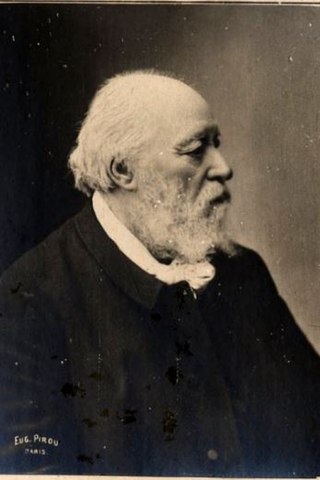
François-Louis Français (1814–1897), usually known as Louis Français, was a French painter, lithographer and illustrator who became one of the most commercially successful landscape painters of the 19th century. A former pupil of Gigoux, he began his career by studying lithography and wood engraving, becoming a prolific illustrator and printmaker. His work as an illustrator is to be found in around forty books and numerous magazines from the late 1830s to the 1860s. Français also produced a large number of pen and ink drawings, enhanced by sepia, notable for their attention to detail and for their technical adroitness and conciseness.
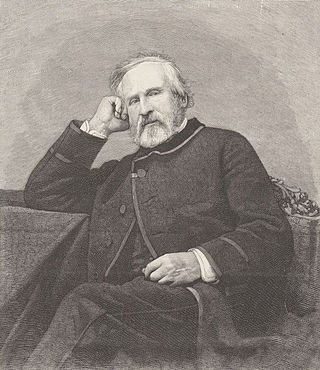
François-Auguste Biard, born François Thérèse Biard was a French painter, known for his adventurous travels and the works depicting his experiences.

Georges Stein, born Séverin Louis Stein, was a French Impressionist artist. Stein was a painter and draughtsman, and is known primarily for light-infused views of Paris and London. He also painted scenes from Melun, Vichy, Bern, Geneva, and Monte Carlo.
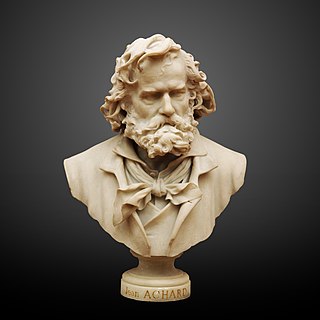
Jean Alexis Achard (1807–1884) was a French painter.
Louis-Philippe Crépin was a French marine painter. Together with Théodore Gudin, he was appointed as one of France's first two Peintres de la Marine in 1830.

Eugène Lavieille was a French painter.
Jean-Louis de Marne was a French painter.

Georges Bernard Michel was a French landscape painter. His works are considered to be a precursor of the Barbizon School.

Henri Biva was a French artist, known for his landscape paintings and still lifes. He focused primarily on the western suburbs of Paris, painting outdoors in the plein-air tradition; his style ranging between Post-Impressionism and Realism with a strong Naturalist component. Biva's pictures are characterized by intricate strokes and a pure palette bathed with warm natural light. The artist was a member of the Société des Artistes Français and a Knight of the Legion of Honour.

Charles-Théodore Frère was a French Orientalist painter. His younger brother, Pierre-Édouard, and his nephew and namesake, Charles Edouard Frère, were also painters.
Simon Joseph Simon-Auguste was a French artist, known for his intimate paintings, mainly portraits, nudes and still lifes. His production is characterized by a calm, intimate feel, and the effective use of glaze.
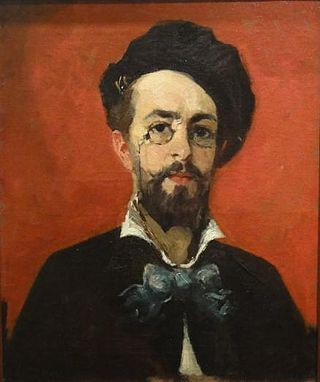
Frédéric Samuel Cordey (1854–1911) was a French landscape painter who was a part of the Impressionist movement. He was a close friend of Auguste Renoir, and had a personal fortune that allowed him to work according to his taste, regardless of the publicity and support provided by art dealers.

Charles Alexandre Bertier was a French landscape painter.

Jean-Baptiste-Antoine Guillemet was a French renowned landscape painter and longtime Jury member of the Salon des Artistes Francais. He was one of the first 19th-century artists to paint modern life, and a pivotal figure in the transition from Realism to Impressionism.
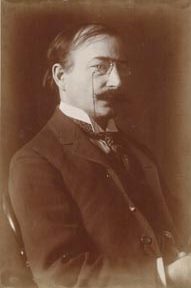
Henri Beau was a French-Canadian Impressionist painter. He is noted for Chemin en été, La dispersion des Acadiens, L'arrivée de Champlain à Québec, and Les Noces de Cana. Beau is a largely forgotten artist due to his long absence from Canada. His widow Marie Beau worked towards establishing his reputation as an artist in Canada after his death. He was only recognized as a notable artist decades later, with major retrospectives of his paintings celebrating his career by the Galerie Bernard Desroches in Montréal in 1974, and at the Musée du Québec in Québec City in 1987.
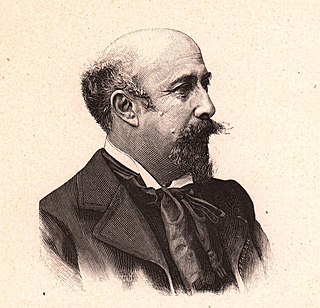
Luigi Loir was a French painter, illustrator and lithographer.

Auguste-Xavier Leprince was a French artist and painter who attained celebrity at the age of seventeen. His patrons included the Duchesse de Berry, Charles X, and Alexandre du Sommerard. He was also a teacher; in his twenties he established his own atelier in Paris, with pupils including his two younger brothers, Robert-Léopold and Pierre-Gustave, as well as Eugène Lepoittevin and Nicolas Alexandre Barbier. His meteoric career came to an abrupt end and his "brilliant promise was cut short by his premature death at the age of twenty-seven."

Paul-Alfred Parent de Curzon was a French painter, known for his genre scenes and landscapes with figures.

Charles-Caius Renoux was a French painter, lithographer, and illustrator. He first achieved success with paintings of medieval churches, particularly the ruins of cloisters and monasteries destroyed during the French Revolution, works for which he is still best known. Renoux also painted landscapes, large-scale battle scenes, and historical subjects, works which uniquely prepared him for the final phase of his career, the creation of spectacular dioramas, the "moving pictures" of the era. He also taught at the École des Beaux-Arts in Paris; his notable students included Narcisse Berchère and Hector Hanoteau.

Auguste Prévot-Valéri, pseudonym of Valéri Prévost, was a French painter known for pastoral landscapes. He was the father and teacher of the landscape painter André Prévot-Valéri (1890-1957).